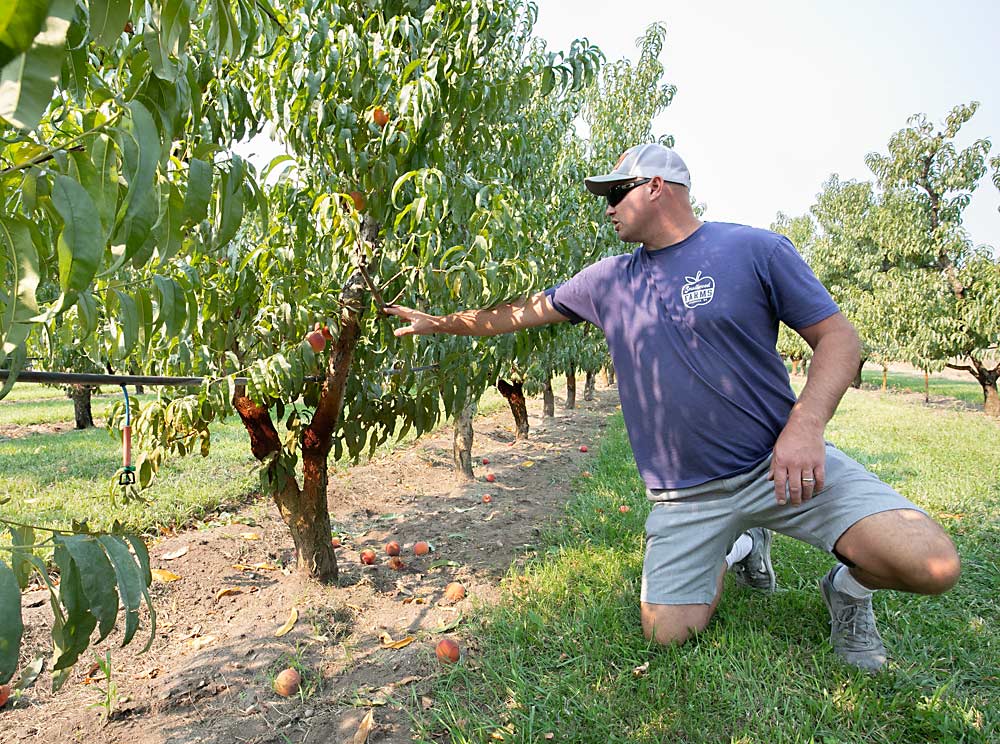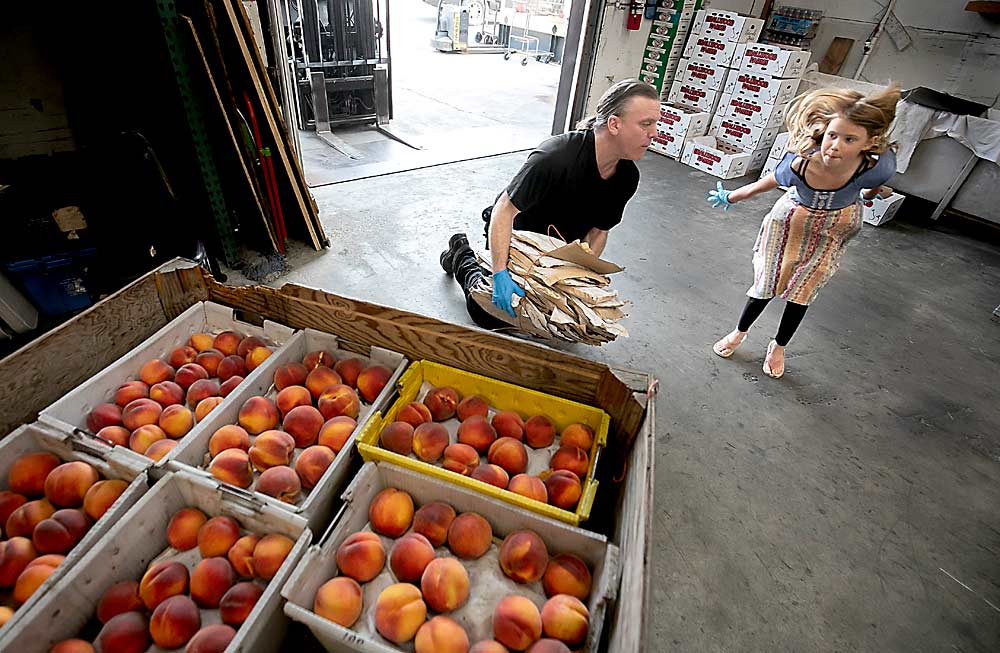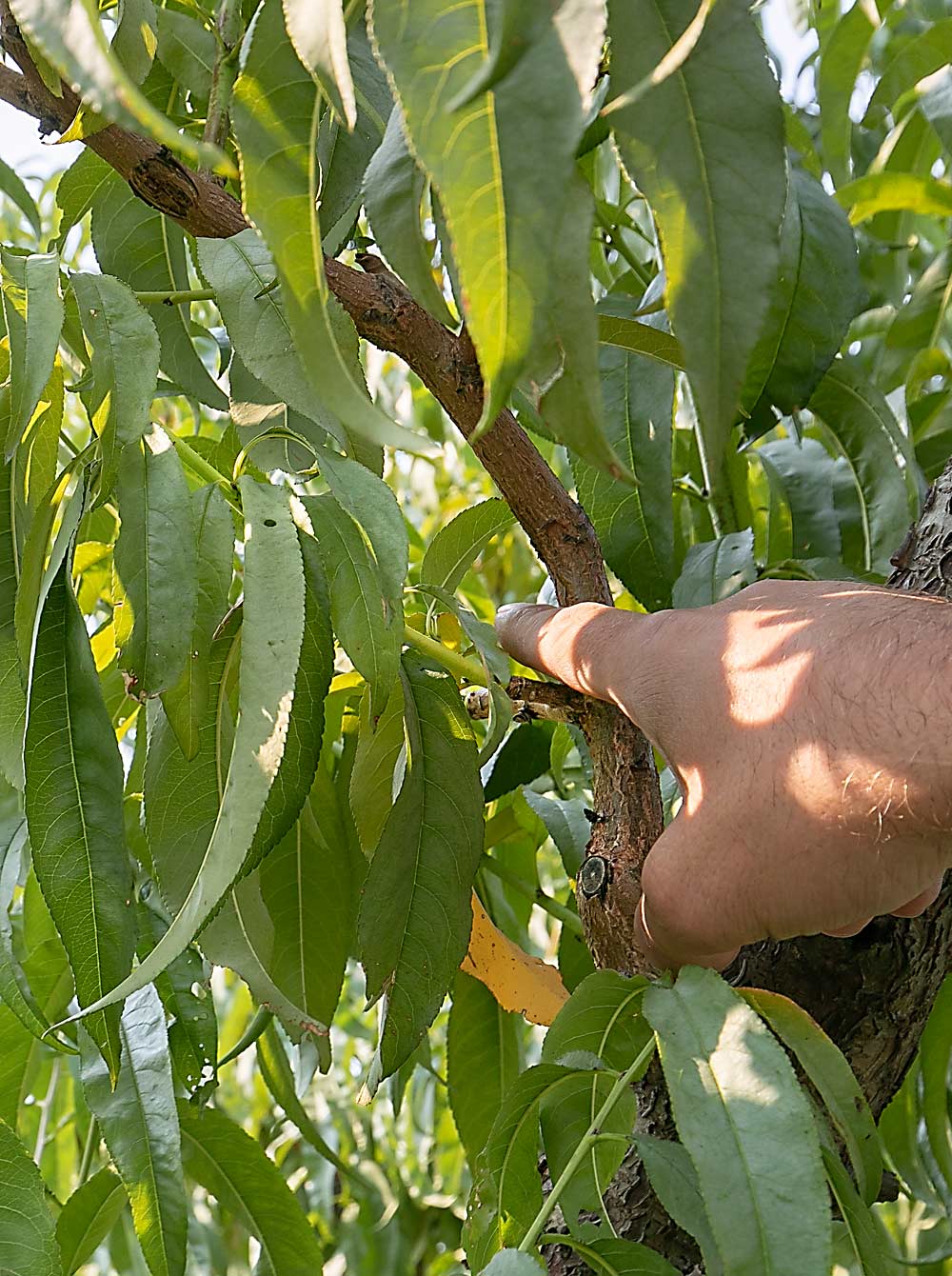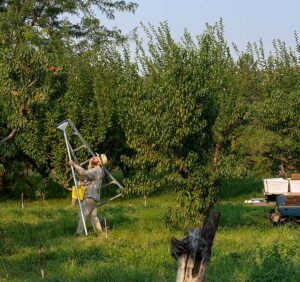—story by Ross Courtney
—photos by TJ Mullinax

Dennis Carlton knows his stone fruit.
The fourth-generation, North Central Washington orchardist’s family teases him for pointing out varieties during drives, with just a glance at the trees, just like he used to do with his grandfather.
“‘When you’re a real farmer, you’ll know,’” he recalled his grandpa telling him. “And now I understand what he meant.”
But Carlton also knows his stone fruit limits. He believes he could successfully and profitably sell two, three or 10 times the production from his 12 acres of peaches, apricots, nectarines and plums near the town of Okanogan. He has his own fruit stand, as well as a bevy of farmers markets and specialty retailers in the Methow Valley and Bellingham.
But labor constraints limit him.
He pays by the hour, but seasonal workers want the scale that comes with piece rate, making it hard to recruit locals. He has a few year-round employees, but to keep up during harvest, he also contracts a few H-2A workers each year.
He instructs his workers to pick only the ripest fruit. In fact, when Good Fruit Grower visited in August 2023, his crews had brought a few lugs of Angelus peaches into the warehouse earlier that morning, but he told them to stop and wait a few more days. They weren’t ready yet.
“We pick it riper when we sell direct,” he said.
He has convinced his specialty retailers to embrace the riper fruit and lack of stems as indicators of peak maturity and freshness, opposite of what most wholesale-driven grocery stores do.

He sends out his picking team with 20-pound lugs and pockets full of rolled-up padded liners. They cost about 7 cents each, and his family reuses them.
He doesn’t field pack peach boxes, but workers carefully place each piece of fruit in their lugs. No bucket dumping.
His crews bring the lugs to his small warehouse, co-located with his market and restaurant, for inspection prior to hand-packing. He doesn’t want someone who’s shelling out nearly $50 for a box of peaches to complain about bruises or other blemishes.
The 60-acre farm also has cherries, apples and pears. He can afford to let workers move faster in those crops and is able to pay piece rate.
Wholesale apple sales, supplying specialty retailers and his State Route 20 fruit stand and restaurant, managed by his wife, Mallory, each contribute to the farm’s income.
This year might be different, however, he said. A deep cold spell in January may rob him of his entire stone fruit crop. His apples and cherries seem fine, he said.

To boost his stone fruit productivity and efficiency, he uses many of the ideas that have helped apples. He trains most of his stone fruit trees into a two-leader V shape, pruning to allow sunlight to the lower branches.
As an organic producer, weeds are one of his biggest problems, and he uses a mechanized weeder. To protect his irrigation system, he drapes tubing in the crotch of the trees and tightens it with T-posts at the row ends. He weighs down his inverted microsprinklers to keep them from spraying sideways.
Carlton extends his season with a variety mix. For years, he had too many early peaches, overloading his stand and his retailers for a couple of weeks and then leaving them with nothing.
Since replanting with later cultivars, often two rows at a time, he now picks for nearly three whole months — from early July through late September. That also diffuses his labor needs more evenly through the season.
“That way, we’re the first person with peaches, and we’re the last person with peaches,” he said. •









Leave A Comment